BALANCED POWER BMU2500
At a smidge below £2000 the Balanced Power BMU2500 offers six outputs of balanced power. Janine Elliot takes a listen for HiFi PiG.
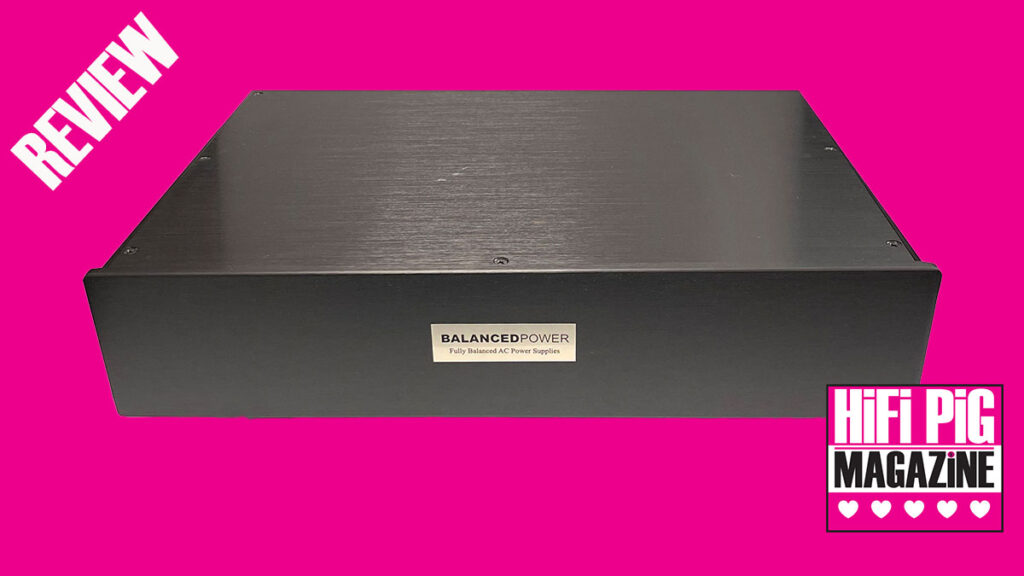
I always get excited when someone says the acronym “BMU”. I have had a soft spot for mains taming equipment like mains conditioners and as is here, a Balanced Mains Units, and even advised several companies over the years on producing such items. Whilst mains conditioners can be a fairly successful way of controlling the noise floor in your 230-240V mains, they can reduce the dynamic range and transients, changing the sound by various degrees, so the best way, in my opinion, of ensuring virgin mains into your house is via a balanced mains transformer. Of course, once into your house, any interference therein from wi-fi, Bluetooth or mobiles is another story, and the case for another review. Russ Andrews, Airlink and NVA are the names of three British companies working on improving our audio, but another recently joined the party, namely Balanced Power, distributed by Factor One, and their BMU2500 at £1,995.
Starting up as just a project to improve the designers’ own HiFi system and then designing BMUs for friends, it became clear that the project could successfully become a company startup, and now a growing number of audiophiles control their HiFi at a higher level because of a balanced power supply from Balanced Power.
BALANCED VS UNBALANCED
A conventional isolation transformer – as used by many musicians and studios as a safety device, providing electrical insulation between what goes in and what comes out – works by using a transformer with equal primary and secondary coils so that what goes in from the live and neutral in the primary comes out exactly the same at the other end. The earth connection just bypasses the transformer. With a balanced transformer you split the 230-240V input into two halves – positive and negative – with the earth “in the middle” so that the L and N secondary’s offer 115-120V each inversely phased, meaning that when these are combined at the earth point any equal and opposite noise interference is cancelled out (common mode rejection). This is a technique that has been used for many years and whilst a home improvement shop might offer a really cheap BMU, they really are not suitable for your expensive music or video system, nor do they look like they should sit next to your beautiful HiFi. Quality of components, such as sockets, transformer wiring and the physical stability of the box are just some reasons why a well thought out unit is the order of the day. I reviewed the original Russ Andrews BMU3000 a while back (now £4769 in mkii form) and was simply lifted off my feet by the extra quality it gave to the audio, so could this BMU from Balanced Power be a cheaper alternative?

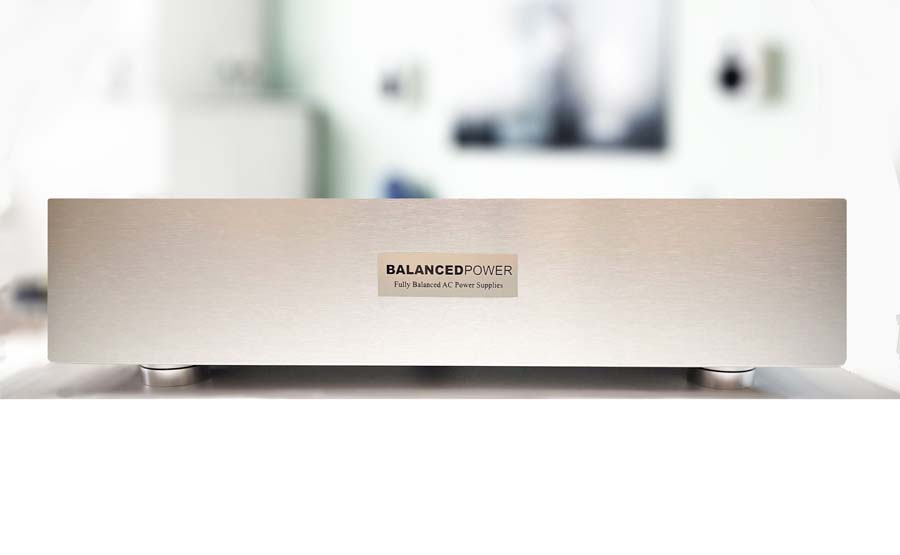
BUILD AND FEATURES OF THE BALANCED POWER BMU2500
Whilst the Russ Andrews BMU3000 is safe for 3kVA, the BMU2500 is designed for a maximum load of 2.5kVA, which is fine even for all my thirsty Krell gear. This is a 6-output mains block (430 x 32 x 115 mm) weighing in at 22kg, which did surprise (and annoy) my postie when he delivered it and couldn’t get it through the letterbox. It was delivered in a protective hard case, the sort of quality you put your prized keyboard of guitar in, perfectly fitting inside the outer cardboard box. The unit itself is very modest and very good-looking.
The solid chassis is made from thick anodised aluminium with high-end components used throughout. The chassis’ top panel is heavily dampened with specially chosen materials to make it more inert. There are short signal path connections in a star-earthing formation and the chassis ground access point on the rear is via a 5-way 4mm binding post, to give you a reference earth point. Whereas the Russ Andrews has two toroidal transformers this much cheaper BMU2500 just has the one, an oversized ferrite core with OFC wiring made by Toroidy. It is mounted on Sorbothane rather than conventional rubber, so that it reduces microphony and doesn’t degrade. The rear has the 6 German ABL 13A mains sockets to connect to your HiFi, each one a tight fit and having ultra-low electrical resistance properties. They each have a spring-loaded cover to protect the sockets from dust and moisture when not in use, and all the sockets are positioned upside down, so that you can have the unit at the bottom of your rack/stand with cabling tidily positioned to your hifi above. Even these are mechanically decoupled from the main chassis using laser-cut rubber gaskets. Where the Russ Andrews BMU3000 can be set so that it is optimized for your incoming power supply (adjusted manually between 225-260V in the mk i, and RA will match the BMU to your home supply in the mkii when you place your order) the BP BMU is designed to allow a +/- fluctuation in incoming voltage, so effectively 216-264V. Balanced Power can also offer a bespoke service to measure the customer’s average voltage and build the BMU to match. The unit was absolutely silent in use.
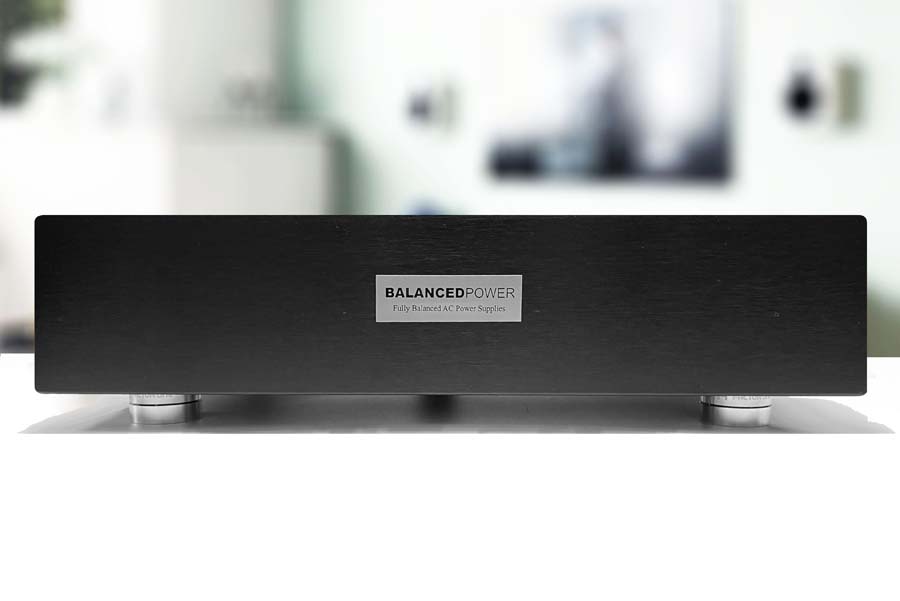

Safety protection is such that if there is any fault in the system all balanced outputs will shut down; if a simple fuse was used on the Live then only one half of the 115+115V would have been cut, and your Neutral would still be connected, which is dangerous! The trip deployed in the BP has gold-plated circuit board tracks and connections plus magnesium relays to ensure good technical quality. Users from other countries still get this protection even if their plug has no fuse. The BMU2500 also has a DC (Direct Current) Blocking circuit which allows the transformer to work at its optimal ability without being affected by harmful DC interference, which prevents humming from the mains and stops DC leakage reaching your system. It also means it isolates it from EMI/RF interference such as fridge/freezer clicks and switch-mode power supplies. If you were to take a DC reading of your mains supply you will be able to see a small amount of DC contamination and this can cause humming from your amplifier. As Balanced Power told me; “Now, if DC were to get into the transformer’s primary winding coil it will turn it into a permanent magnet. The transformer’s core will then become polarised and if the DC voltage is high enough, the transformer will vibrate and begin to hum and can skew the transformer’s ability to efficiently transfer the electromagnetic energy created by the coil and transform it back into AC voltage in the secondary output coil”. So, it is vital to be able to block the DC from reaching the transformer and cause this song and dance. This is done by including 2 full-range bridge rectifiers in series. The circuitry also includes a dual trip thermal breaker to immediately cut both live and neutral connections if there is a problem. All these housekeeping safety features also extend the life of your HiFi. Even the feet of this very heavy unit are special; each one is made from two CNC’s discs of aluminium polymer compound to reduce micro-vibrations with 3 ceramic ball bearings sandwiched in between which convert vibrations into heat. These are a basic version of the OMEX Symphony 2A feet, also distributed by Factor One. Switch-on is via a toggle switch on the back and there is no warning “on” indicator on the front. There is a custom-built soft-start circuitry with inrush protection to look after your valuable HiFi electronics.
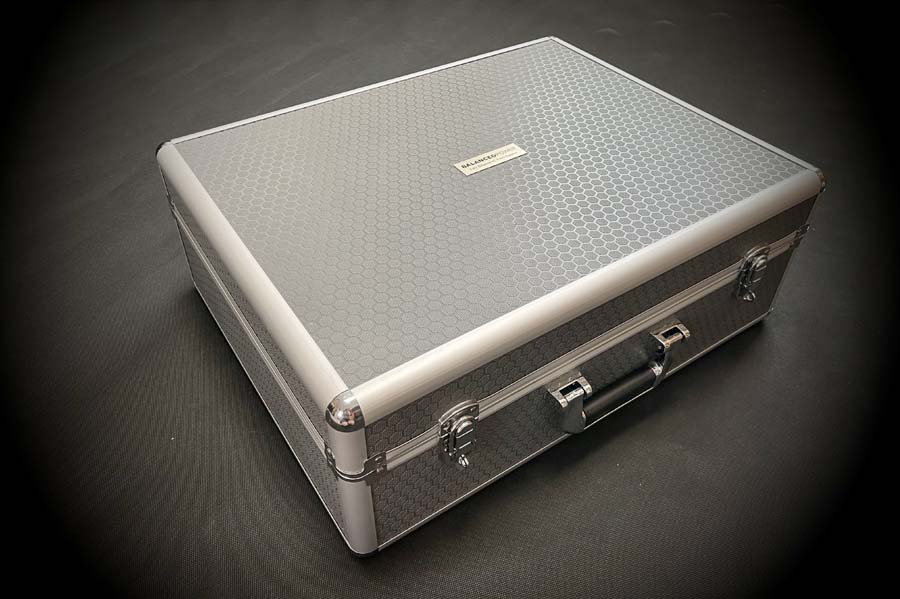
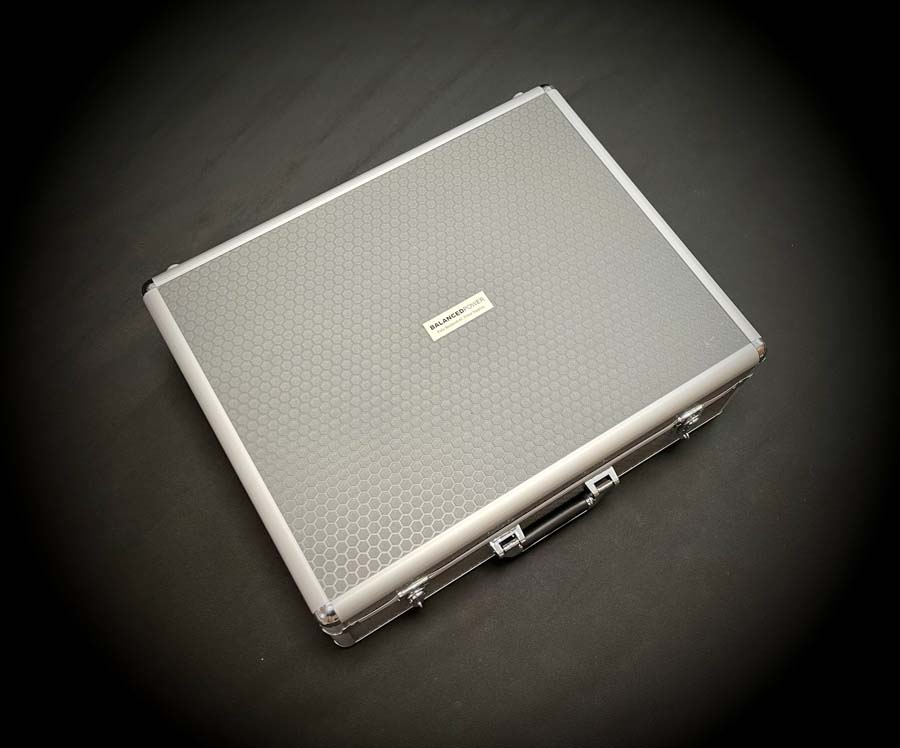
SOUND QUALITY OF THE BMU2500
Music certainly improved after a while from switching on. To start my listening sessions I played noisy vinyl through valve monoblock power amps which I always find can be even noisier if the mains is bad. Starting with ‘HeartPlay’ and my favourite acoustic guitarist, Antonio Forcione, with double-bassist Charlie Haden in the excellently recorded Naim “True Stereo” LP (using two AKG 414EB’s in ORTF stereo array recorded onto a Nagra IV-S), the music was exceptionally clean in “La Pasionaria” with lots of detail from the guitar plus fast transients from Charlie’s double-bass. The guitar had “bite” and passion, with the Yamaha GCX-31C guitar keeping me pinned to my seat with its now improved dynamic range. With just two musicians playing this sounded large and the stereo spread was as big as you could sensibly make it.
Next to prog-rock band Genesis. As some of you will know by now, I am not impressed with the recording and mastering of their albums, much as I love the music, having in the 80’s being fed on it daily at university whilst simultaneously trying to write theses (not a good idea…). There is just not enough dynamic range, deep bass and imagination in the soundstage – particularly 3D. I guess some miracles aren’t possible, and whilst the BMU did its best to give faster transients and a more controlled bass end without noise pollution, ‘Three Sides Live’ still lacked stereo definition; whoever was the recording engineer was obviously sitting 100m away from the stage and only the audience claps really indicated that this wasn’t a mono recording, and only the occasional spread of the drums kept me interested. Bass guitar runs on “In the Cage” were good, but it still missed the very lowest notes, though the music was very clean in the 7/8 section.
Having been probably expecting too much from the BMU2500, I decided to play music that I had used in the original Russ Andrews review as well as during their recent RF Router review, quite simply because I witnessed definite improvements in the sound when using these tracks as donor material. Firstly, Katie Melua “Reefs” (from the 2023 album ‘Love & Money’). On the start up I thought I was playing a 45rpm disc at 33 1/3, as the bass extension at the start of the track was just so massive. This was just the Wilson Benesch Arcs on their own and my Torus infrasonic generator wasn’t even switched on. The deep bass Db note was so confidently played and with clarity and tightness that only a few speakers such as the Wilson Benesch can put across accurately. Even the vocals from Katie had a purity that can only come from balanced mains. Her voice and the instruments were positioned clearly in the soundstage, not just left and right but also in front and behind the speakers. The snare drum in “Pick Me Up” pricked up my ears with its detail – even in this very gentle playing – such quick transients and low noise stood this mains unit out from much of the competition. This album might not be the best from Katie in terms of tunes being the most hummable, but this hum-free BMU showed just how excellently it has been engineered, and is well worth adding to your music collection.
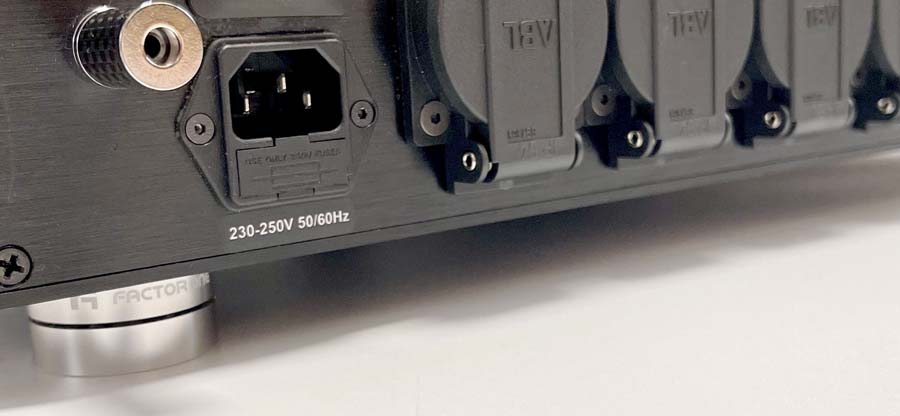
Turning to Widor’s Symphony No. 5, for solo organ, to hear all that detail in the recording, especially the deep bass and huge dynamic range, I wasn’t to be disappointed either. I had found this performance astounding from the Russ Andrews BMU3000 and this much-lesser-priced alternative was very nearly as good, just slightly lacking in the excitement that was offered when I reviewed the company’s RF Router, and perhaps suggesting that the Balanced Power BMU2500 and Russ Andrews RF Router would make a good duo. The quiet middle section was just so exquisite. The deep bass from the left foot of organist David Hill on the pedal board was clear and exact, the organ at Westminster Cathedral, London, having been built by Henry Willis and Sons over ten years from 1822. No circuit boards and speakers in those days, just 32-foot pipes for the deepest pedal-board notes reducing to 2ft at the top frequencies.
Sticking with organ but adding an orchestra and piano I turned to Saint Saëns Symphony. You can always tell where deep and loud organ sections are on a record by looking at the extra size of the grooves, and this record is no exception; the end of side one and the really famous section towards the end of side 2. This record (EMI, Serge Baudo conducting the LPO) is rather gritty at the top registers of the strings and brass when they play loud, but the BMU kept it all behaving surprisingly well controlled. All the detail was there but it was better focused and more musical. This is a 2-movement work, though most regard this as a 4-movement symphony. In fact, the two movements contain lots of different sections or sub-movements. The “second” movement, for example, actually has 10 different speed indications! With full orchestra, organ and even a piano, this symphony is always good to use in a review, and the BMU helped to position all the sections and soloists into their own allotted spot in the soundstage. As for the organ, this was very powerful and I was amazed at how low and full my speakers sounded. The lowest note “B” seemed to be at 16Hz (if it was a 32-foot pedal board). I certainly felt that low pulsing away. Whether it was actually 31 or 16Hz, it didn’t matter, as everything was so well-focused and transparent, it just gelled in a way I hadn’t experienced before. Everything seemed more relaxed and in control, removing any stress that I had expected to hear. I don’t know how they managed it but the orchestra was recorded at Watford Town Hall in 1982 and the organ hundreds of miles away at Paisley Abbey, Scotland in 1983!
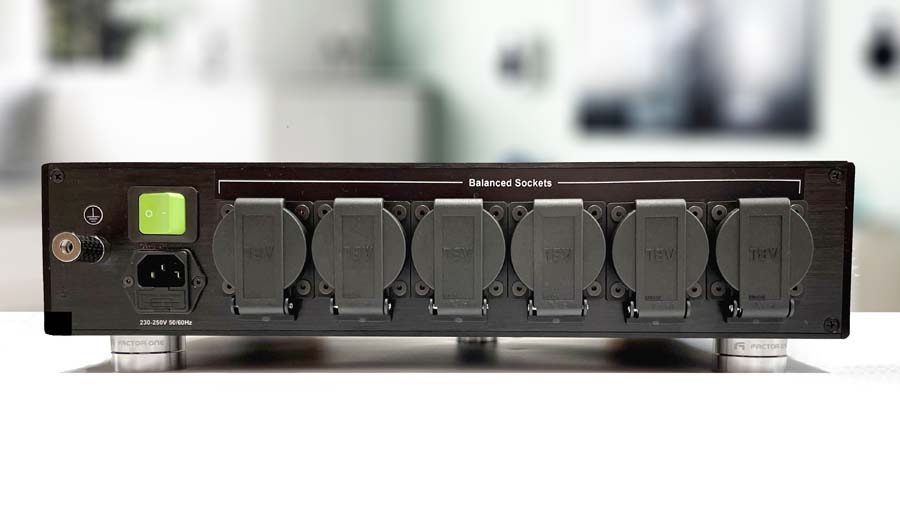
Finally, it was over to Pink Floyd’s eighth studio album and the latest re-release of ‘Dark Side of the Moon’. This album has so much space and timing in it, so was ideal to test the BMU. Everything was as precise as it could possibly get; cymbal hits, bass heart-beat thumps, clocks ticking and money clacking. This iconic album sounded even more analogue and with even less strain than I had heard before. Even the vox pop at the start was more defined in sound and placement.
CONCLUSION
Despite being cheaper than some of the top-end Balanced Mains Units and even mains conditioners I have listened to over the years, I wasn’t to be let down by sound quality in the BMU2500, and a considerable amount of time and effort has been put into the design and build quality of this unit. Nothing seems to have been missed apart from a light in the front! As long as the right core and cables are used (and correctly), BMU’s should always make a difference to the music. But what Balanced Power has done is go a stage further with all the build details and extra circuitry used in this model, and it would certainly be £2000 worth of investment if you want your audio to sound at its best, and probably live that little bit longer as well.
AT A GLANCE
Build Quality:
Well-constructed, good looking and with excellent isolation feet
Sound Quality:
Excellent across all frequencies, with very extended and tight bass end, no midrange colouring, and fast top end
Excellent noise floor and soundstage clarity
Value For Money:
At £5 short of £2000 this is excellent value for what is inside, and a relatively cheap way to get more out of your HiFi.
We Loved:
Focus and transparency
Analogue sound
Better speed accuracy and increased excitement
Extra dynamic range
The feet
We Didn’t Love So Much:
Nothing at this price
Elevator Pitch Review: With yet another British company offering a Balanced Mains Unit I wondered if this one could make a difference. After all, you could quite simply go to your local DIY/electrical store and pick up some cheap foreign-built alternative. But would it work? With build quality, components and safety features of paramount importance, this one from Balanced Power really is something special. Despite £1995 seeming a lot for a power supply, there is a lot of wire and electronics inside, and at under half the price of my favourite BMU, offers a performance that made my HiFi sound at its very best. But it’s not just about sound quality; this BMU will also look after your valuable sound-assets ensuring safety and even a longer life.
We all need a balanced life!
Janine Elliot
System used:
Pre-Audio GL-1102N/Ortofon Kontrapunkt b (turntable/cartridge); Manley Steelhead (phono-stage); Krell KPS20i (CD); Music First Audio Baby Reference pre-amp, Synthesis Roma 98DC valve and Krell KAV250a SS (amplification); Tellurium Ultra Silver 2 and Townshend F1 and Isolda cables, Coppice Audio stand and Townshend rack.
SPECIFICATION
- 2500 watts of power with an oversized transformer core
- Shortest signal path
- High quality soft start circuitry with inrush protection to protect equipment
- High quality DC blocking circuitry to prevent humming/noisy mains and stopping DC leakage from reaching delicate electronics
- Audio grade dual trip output protection using gold connection points, gold PCB tracks and magnesium relays
- Ultra-high grade audiophile transformer and internal wiring
- Ultra-high speed star-earthing system for excellent noise suppression into GHz levels
- Additional earthing post for grounding of other equipment and cables
- All wiring harnesses fully starred
- Fully earthed chassis
- Low resistance, high impact, dust and moisture free output sockets
- High quality gold IEC input
- Factor One custom isolation feet with ceramic bearings
- Dimensions: 430 (w) x 320 (d) x 115mm (h)
- Weight: 22kgs/48.5lbs
Merit-Based Reviews and Awards
At HiFi PiG, our reviews and awards are always free. No fees for reviews, no fees for the recognition we give.






















































































































































































